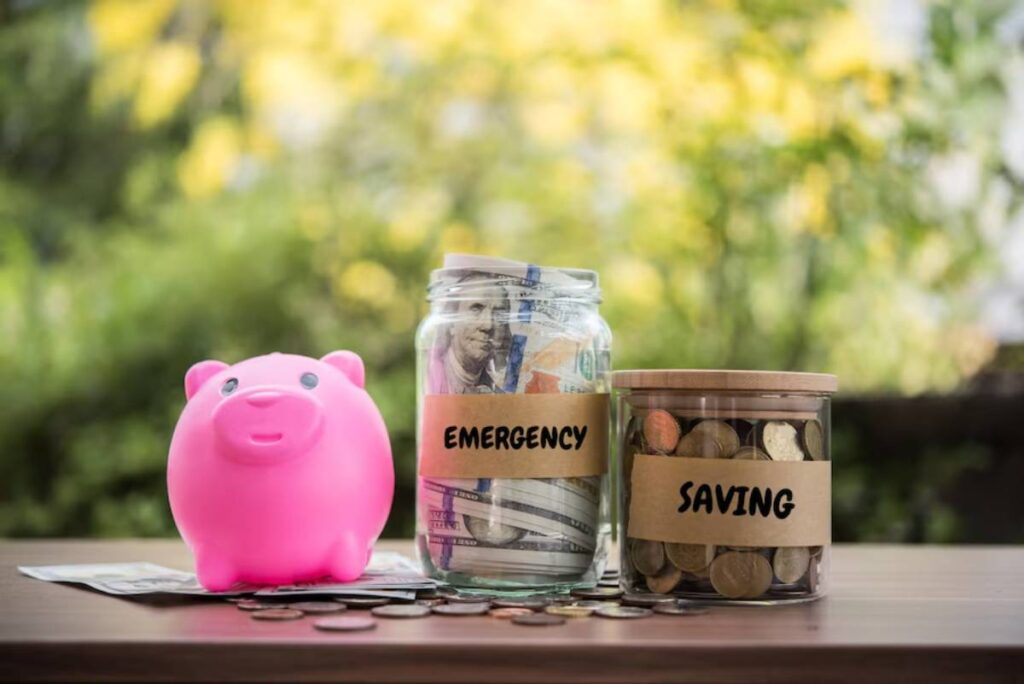The Parenting Blog

How to Create an Emergency Fund for Your Family
Building an emergency savings plan is a crucial step towards securing your family’s financial future.
Our team has found that establishing a dedicated family financial safety net can greatly reduce anxiety in times of uncertainty. With thoughtful planning and consistency, you can create a reliable buffer that supports your family through unexpected expenses without derailing your long-term goals.
The idea of an emergency fund is centred on financial resilience—being prepared for life’s uncertainties. Whether it’s a sudden medical bill, loss of income, or major home repair, a well-maintained fund can provide much-needed peace of mind. Our research shows that with the right approach, building an emergency fund becomes not just possible but empowering.
Focusing on steady savings habits, goal setting, and family-wide awareness allows you to foster a strong financial foundation. A family emergency fund not only offers immediate relief in crisis situations but also encourages long-term responsibility and confidence in your household’s money management.
Pro Tip:
Start small. Even saving £10 a week can grow into a meaningful fund over time.
Quick Guide: Starting Your Family Emergency Fund
- Assess your monthly household expenses to determine your emergency savings target.
- Open a separate savings account dedicated solely to emergencies.
- Automate a fixed monthly deposit to build your fund consistently.
Important:
Make sure your emergency fund is kept in an account that is accessible but not linked to your day-to-day spending. This reduces the likelihood of impulse withdrawals and ensures the fund is used strictly for genuine emergencies.

Understanding the Importance of a Family Financial Safety Net
In an unpredictable world, having a family financial safety net is essential. Life’s unexpected twists can be tricky, but emergency savings are your safety net. When the unexpected hits, a well-stocked fund keeps you afloat, not adrift in debt. This financial cushion protects your family from money troubles. It helps you handle crises calmly and confidently.
Our team recognises that many families struggle with saving due to daily expenses. Treat your emergency fund as essential as rent or groceries. This way, you invest in your family’s security. Even a modest fund can prevent you from relying on high-interest credit or loans during tough times.
Crucially, this financial cushion provides not just economic relief, but also emotional reassurance. Having resources for life’s surprises lowers stress. It also helps you make better choices in a crisis.
How to Build an Emergency Fund for Your Family
1. Evaluate Your Financial Situation
Begin by calculating your monthly essential expenses—think mortgage or rent, utilities, groceries, transport, and insurance. Multiply that total by three to six months to get your target emergency fund amount. This is a general benchmark used by financial experts for family financial safety nets.
If that amount feels daunting, don’t be discouraged. The goal is to start where you can and build gradually.
2. Set Up a Separate Savings Account
Safeguarding your emergency fund in a separate, easy-access account keeps temptation at bay. This helps you say no to non-urgent wants. Opt for a high-interest savings account or an instant-access cash ISA. Both options deliver better returns while ensuring your funds are ready when life throws you a curveball.
Avoid tying up these funds in long-term investments or fixed deposits—they should remain liquid and reachable at short notice.

3. Create a Family Budget
A clear household budget will help you identify areas to cut back on spending and redirect funds towards your emergency savings. This may involve adjusting non-essential expenses such as dining out, subscriptions, or impulse purchases.
Encourage your family to participate in budgeting decisions. When everyone understands the purpose of the fund, it becomes a shared goal and responsibility.
4. Automate Your Savings
One of the most effective strategies for building an emergency fund is automating contributions. Set up a standing order that transfers a fixed amount into your emergency account each payday. This method ensures consistency and removes the temptation to spend the money elsewhere.
Start with what you can afford—£25, £50, or even £100 a month—and increase the amount as your income grows.
5. Use Windfalls Wisely
Tax refunds, bonuses, or birthday money are excellent opportunities to top up your emergency fund. While it’s tempting to treat these as “fun money”, allocating a portion towards your savings can fast-track your progress.
You don’t have to use the full amount—try a 50/50 approach: half for enjoyment, half for your emergency fund.
Best Financial Practices for Long-Term Stability
Once you’ve established your emergency fund, maintaining it is key. Make a habit of reviewing it every six months to ensure it aligns with your current lifestyle and family needs. Update your savings goals as expenses change—new school fees, a home move, or a change in employment.
Additionally, aim to:
- Resist unnecessary withdrawals. Only use the fund for genuine emergencies like job loss or medical expenses.
- Replenish after use. If you dip into the fund, create a plan to rebuild it as soon as possible.
- Avoid risky investments. Keep your emergency savings safe, not speculative.
Smart Financial Tools
- Monzo or Starling Bank: Track your expenses and automate savings with app-based banking features.
- Money Dashboard or Emma: These tools help you budget and find savings opportunities.
Warning:
Avoid using credit cards as a substitute for an emergency fund—they may offer convenience, but they come with high interest rates and can lead to long-term debt.

Frequently Asked Questions About Emergency Savings
- What’s the Ideal Size for a Family Emergency Fund?
Aim to save at least three to six months’ worth of essential living expenses. For larger families or those with variable income, a higher cushion may be advisable.
- How Can I Build an Emergency Fund on a Tight Budget?
Start small and focus on consistency. Look for everyday savings—cutting back on takeaways or unused subscriptions can free up money to save. Even small, regular deposits make a difference over time.
- Where Should I Keep My Emergency Fund?
A separate high-interest savings account or instant-access cash ISA is ideal. Avoid mixing it with your everyday accounts, and ensure the money remains accessible but not too tempting to touch.
- Should I Prioritise Emergency Savings Over Paying Off Debt?
It depends. If your debt carries high interest, such as credit cards, consider a balanced approach—build a small emergency fund (e.g., £500) while paying down debt, then focus on growing the fund once your debt is manageable.
- What If I Need to Use My Funds?
That’s what it’s for. Use it without guilt for genuine emergencies. Afterwards, create a plan to restore the balance as part of your regular budgeting routine.
Final Thoughts: Securing Peace of Mind Through Preparation
Creating an emergency fund for your family is one of the most empowering financial decisions you can make. It’s not just about preparing for the unexpected—it’s about taking control of your future and offering your loved ones peace of mind. By starting with simple steps, staying consistent, and involving your household, you can build a lasting financial safety net that protects what matters most.









